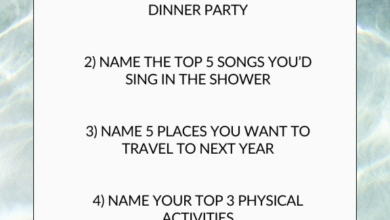Sniffies App: The GPS-Based Platform Redefining Real-Time Connections
Introduction: What Is the Sniffies App?
In the modern world of hyper-connectivity, location-based social apps have become the norm, and the Sniffies app is one that has made quite a stir—especially within the LGBTQ+ community. But Sniffies isn’t just another dating app. It’s more like a live map-based cruising experience that blends real-world spontaneity with digital interaction.
Sniffies started as a browser-based platform and has grown rapidly in popularity for those looking for instant and anonymous or semi-anonymous interactions. It’s known for being raw, real-time, and unapologetically blunt. Instead of the traditional profiles and swipe culture, it uses a map interface that focuses on people’s physical location, displaying who’s nearby and open to connecting—no endless bios or filtered selfies necessary.
The app strips down online dating to its bare essentials: location, availability, and willingness. While it may not be for everyone, it has carved out a niche by being bold and transparent about what it offers. For many users, this no-nonsense approach is refreshing compared to the curated and often frustrating experiences on other apps.
How the Sniffies App Works: A Unique Mapping Experience
Unlike most traditional hookup or dating apps, Sniffies ditches the profile-based feed. It revolves around a live map that displays user markers and hotspots. Each icon on the map represents a user, group, or location where people are meeting up or are open to connections. This gives the platform a distinct advantage when it comes to immediate interactions.
There are three key user elements in Sniffies: individual users, group chats, and cruising spots. Users can browse the map to see others in real-time. They can then tap on a marker to view basic information or initiate a conversation. Conversations are typically casual and straight to the point, reflecting the nature of the app.
One feature that stands out is the level of anonymity Sniffies offers. Users don’t need to upload photos or share personal details unless they choose to. This helps create a low-pressure space for people who might be hesitant to join more traditional apps due to privacy concerns or fear of exposure. While anonymity does bring in some risks, it also opens the door for genuine, judgment-free exploration.
Community and Culture: Why Sniffies Has Gained Popularity
Sniffies has become something of a cultural touchpoint, especially among queer men and the broader LGBTQ+ cruising scene. It captures the essence of real-time, in-person connections that go beyond what standard dating apps offer. Its spontaneous nature echoes the old-school style of meeting people in bars, clubs, or cruising areas—but updated for the digital age.
One major reason for Sniffies’ rise is its unfiltered approach. The platform doesn’t hide its intentions—it’s designed for casual connections, and it doesn’t pretend otherwise. This authenticity resonates with users tired of apps where conversations rarely lead to real-life meetups.
Additionally, Sniffies allows for group messaging and meetup planning, making it a bit of a hybrid between a social network and a geolocation tool. In some cities, Sniffies has become a go-to for organizing spontaneous parties, group hangouts, or even social activism events. The flexibility of the app lets users shape it to their specific needs.
It’s worth noting that while Sniffies focuses on the LGBTQ+ community, particularly gay and bi men, its user base is diverse and ever-growing. The freedom and ease of use attract people from all walks of life who are looking for direct, no-strings-attached interactions or open conversation.
Safety, Privacy, and Criticisms: The Flip Side of Anonymity
Of course, with the good comes the complicated. The Sniffies app has faced its share of criticism, especially around privacy, safety, and consent. Because it prioritizes anonymity and quick encounters, there are concerns about verifying user identities, age, and intentions. Some users have raised concerns about fake accounts or individuals misrepresenting themselves.
Sniffies does have moderation tools and community guidelines, but the enforcement can feel inconsistent at times. The app’s developers continue to tweak the system to make it safer without sacrificing the raw experience that users love. Features like location blurring and temporary hiding help users maintain control over their visibility, but they aren’t foolproof.
There’s also the issue of public or semi-public meetups being organized through the app. While Sniffies discourages illegal activity, it has occasionally been associated with cruising spots that raise eyebrows in conservative areas or are subject to local law enforcement monitoring. This has led to debates about responsibility—how much should an app regulate user behavior when it thrives on spontaneity and openness?
The key here is balance. Users are encouraged to take responsibility for their own safety by meeting in safe environments, communicating clearly, and respecting boundaries. Just like in any social space, digital or physical, consent and respect are non-negotiable.
Sniffies vs Traditional Dating Apps: A Breath of Fresh Air or a Step Too Far?
Comparing Sniffies to traditional dating platforms like Tinder, Grindr, or Bumble is a bit like comparing apples to oranges. While other apps try to cater to a broader audience with more polished features, Sniffies cuts straight to the chase. There’s no endless scrolling through profiles or ghosting after a few chats. It’s about who’s around now, what they’re looking for, and whether there’s a vibe.
This makes it ideal for people who don’t want to invest hours crafting the perfect profile or navigating small talk. For many, that’s a huge time-saver and feels more authentic. For others, the lack of depth might feel too transactional or even impersonal.
However, that doesn’t mean Sniffies is just for one-off encounters. Some users have formed friendships or recurring connections through the app. It all depends on how you use it. The real-time mapping system simply offers a different method of connection, and for those who are tired of the dating game’s slow pace, it can be a welcome change.
Tips for New Users: How to Get the Most Out of Sniffies
If you’re new to Sniffies, diving in can feel a bit overwhelming at first. The map is busy, there are lots of icons, and the anonymity can be both freeing and confusing. But once you understand the rhythm of the app, it becomes surprisingly intuitive.
First, decide how visible you want to be. You can turn off your exact location, use vague profile details, or remain completely anonymous until you’re comfortable. The app allows you to control your privacy level, which is crucial for beginners.
Second, don’t be afraid to engage—but do so respectfully. While most users are upfront about what they’re looking for, a little courtesy goes a long way. Ask questions, be honest, and remember that everyone on the app has their own boundaries and reasons for being there.
Lastly, explore the hotspots and chat groups. These can give you a feel for local scenes, ongoing events, or regular meetups. Whether you’re in a major city or a smaller town, there’s likely something happening nearby—if not, you might just be the one to start it.
Final Thoughts: Is Sniffies Right for You?
Sniffies isn’t trying to be your average dating app. It’s edgy, unapologetic, and built for people who value instant connection without the fluff. It reimagines what location-based apps can be by putting live interaction front and center and giving users the tools to engage on their own terms.
That said, it’s not a one-size-fits-all solution. If you’re looking for long-term relationships, detailed profiles, or a slower dating experience, Sniffies might not be your first choice. But if you’re someone who values real-time spontaneity, minimal filters, and open-minded connections, this app could be exactly what you’ve been looking for.
In the end, Sniffies represents a broader cultural shift—away from performative profiles and into real-world immediacy. It invites users to explore, engage, and connect in a way that’s raw, real, and remarkably human.



